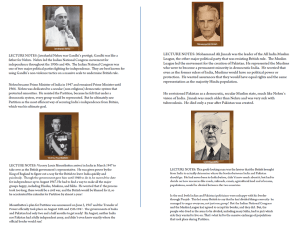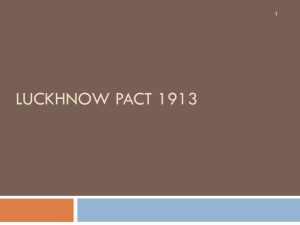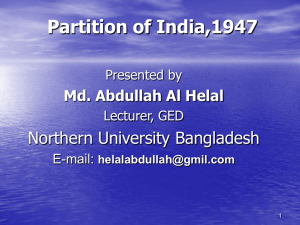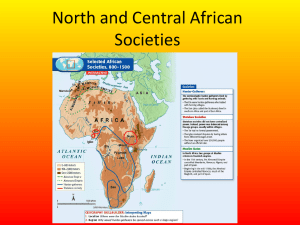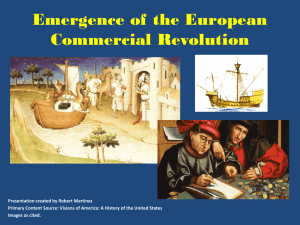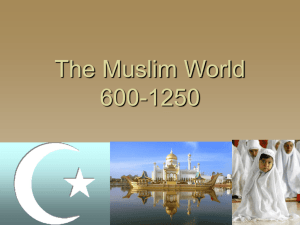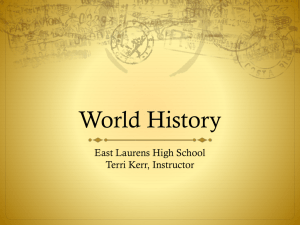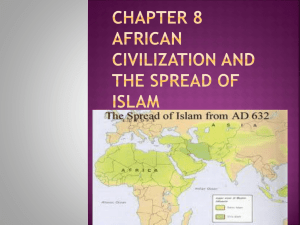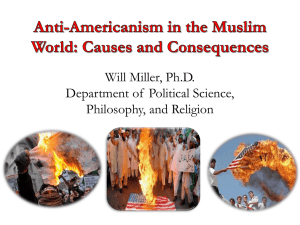File
advertisement
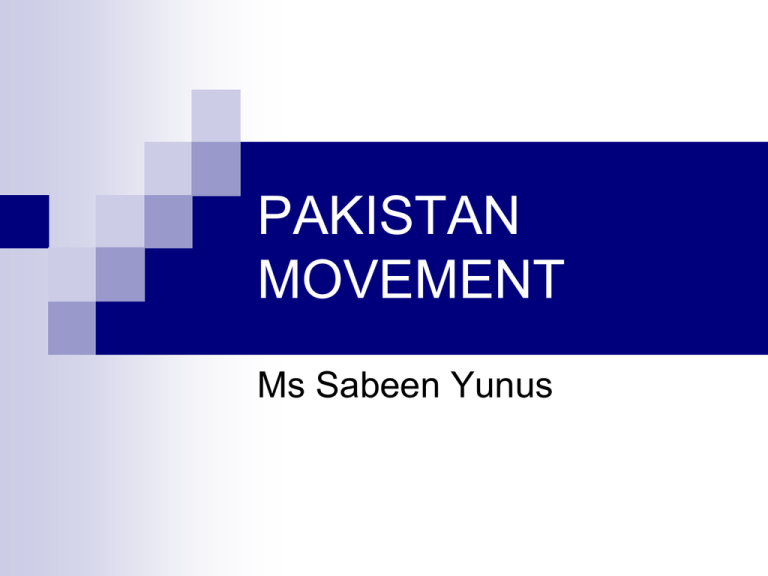
PAKISTAN MOVEMENT Ms Sabeen Yunus Evolution of Two Nation Theory 1) 2) 3) 4) 5) Background:Religious Differences. Hindu Nationalism. Cultural and social Differences. Economic and Educational Differences. Political Differences. Political Struggle 1927 to 1947 Delhi Proposals 1927 In 1926 Hindu Mahsaba started propaganda against Lucknow pact and separate electorate. Pandit Nehru requested Quaid to surrender their demands Quaid called a meeting of Muslim leaders on march 20,1927 in Delhi. 1.Sindh,Balouchistan and N.W.F.P to given status of full province. 2.Muslim representation in Bengal and Punjab in accordance to their strength. 3. Muslim’s shall have 1/3 seats in the central legislature. Disapproval of Delhi proposal by sir shafi (M.L Lahore group) Simon Commission 1927 A commission(1927) under Sir John Simon, sent to India to examine the effects of MontagueChelmsford Reforms(1919) The Congress and a section of ML under the leadership of Quid e Azam, decided to boycott the commission. Other group of M L under the leadership of Sir Muhammad Shafi, was in favour of commission. A scheme of constitutional reforms, on the basis of recommendations of Simon Commission was prepared by the Government. The Congress and Muslim League both refused the recommendations Nehru Report 1928 Recommendations of Simon Commission (presented in October ,1927) rejected by the Congress and Muslim League. Lord Birkenhead, the Secretary of State for Indi , declared in the parliament that Indians are divided, opposed each other and unable to produce a unanimously accepted constitution. In February, 1928 all parties conference was convened to prepare a draft for constitutional Reforms. Moti-lal-Nehru presided. Muslims were given insignificant weightage, attended only one meeting and put their signatures on Nehru report. Self Governing, Joint Electorate, Unitary Form Hindi as official Language. Hindu-Muslim Rift. Quaid-e-azam proposed 3 amendments:1)1/3 representation. 2) Punjab and Bengal on basis of population 3) Powers to be given to provinces. Rejected by Hindu Majority. All parties conference held in Delhi under Sir.Agha khan(1929). Demands :1)Separate Electorate. 2)Federal system to be introduced in centre with provincial autonomy. 3) Representation in central and provincial assemblies. 4)Representation on the basis of population 5) 1\3 in central legislature Quaid-e Azam Fourteen Points 1929 In reply of Nehru Report Quid e Azam decided to give his own formula for the constitutional reforms. 1)Future constitution should be federal. Residuary powers vested in the provinces. 2)A uniformed autonomy (all provinces ) 3)Muslim representation shall not be less than 1\3 in central legislature 4) In the central legislature Muslim representation shall not be less than one-third 5) Representation of communal group shall continue to be by separate electorates provided that it shall be open to any community 6) Any territorial redistribution that might at any time be necessary shall not in any way affect the Muslim majority in the Punjab, Bengal and khyber pakhtunkhawa. 7) Full liberty of religion; belief, worship and observance, propaganda, association and education shall be guaranteed to all communities 8) Any bill or resolution shall be passed by three-fourths of the members of any community. 9)Sindh should be separated from the Bombay. 10) Reform in the NWFP and the Baluchistan like other provinces. 11) Muslims should be given services of the state. 12) Constitution for the protection and the promotion of the Muslim culture, education, language religion and civilizations 13) One-third representation in central and provincial cabinet 14)The constitution shall not be changed without concern of Indian federation Allahbad Address 1930 Annual Session of All India Muslim League Allama Iqbal clarified Two nation theory and demanded a separate homeland Round Tables Conferences 1930-1932. After publishing Simon commission report , Congress annual meeting at Lahore,(Dec,1929) Civil disobedience movement launched under Gandhi's leadership in April1930. Gandhi and Nehru arrested. Govt started Round Table Conferences I Round Table Conference: 12th Nov,1930 to 19th Jan 1931 Congress boycott, Muslim League attended the conference Eight sub Committees formed. accepted the proposal of full responsible government in provinces and a federal system in the centre. Gandhi Irvin Pact: Lord Irvin invited Gandhi for talks, continued from17thto19thFeb,1931. Agreement signed on 5th March 1931. i-Congress will call off civil disobedience ii-attend 2nd Round Table Conference iii- Government would withdraw all ordinances which curb the Congress iii- release detained persons. II Round Table Conference: From7thSep, 1931 till 1st Dec1931 in London. Gandhi from Congress and Allama Iqbal from Muslim League. Gandhi’s stubborn attitude towards minorities Conference ended without any conclusion III Round Table Conference From 17th Nov, 1932 to 24th Nov 1932 Congress abstained from the conference Sir Agha Khan from Muslim League Congress Leaders were in jail because of civil disobedience movement again Conference ended without achieving goals Communal Award( August 1932) British Governmentt published their own scheme Retained separate electorate, reduced Muslim majority to minority in Punjab and Bengal, political rejected the Award Government of India Act 1935. The recommendations of round table conferences published in 1933. Report of committee ( Sir Agha Khan, Zaferullah Khan, Shafat Ahmed Khan, AbdurRahim,A H Ghaznzvi) published in 1934 in a Bill of Law. After approval of British parliament, the Bill enforced as Government of India Act,1935. The Act contained, 14 parts and 10 Schedules, consisted of two parts I. Provincial subjects II. Federal subjects Political leaders rejected it and Quid declared as a defective document 1937 Elections and Congress Rule Congress achieved big victory. Muslim League failed to get seats even in Muslim majority areas Congress ‘s rigid and dictatorial attitude after winning elections Congress formed ministries in 8 provinces. Muslim ministry was formed in Sindh but dissolved because of Congress conspiracies End of Congress Rule and Day of Deliverance

